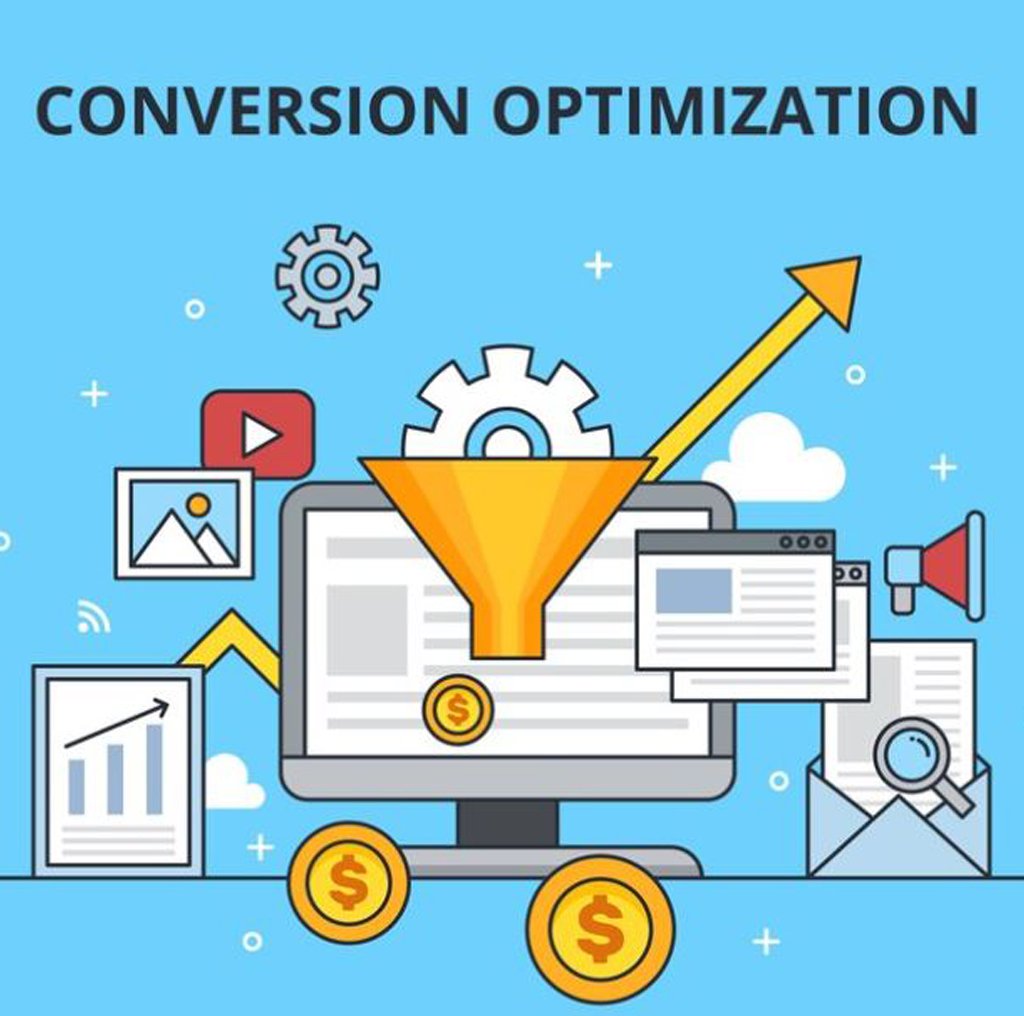Understanding the Importance of CRO in Digital Marketing
June 03, 2024 | Digital Techtune

In the fast-paced world of digital marketing, businesses are constantly seeking ways to improve their online presence and increase their return on investment (ROI). One of the most effective strategies to achieve this is through Conversion Rate Optimization (CRO). CRO focuses on enhancing the performance of a website or landing page to increase the percentage of visitors who complete desired actions, such as making a purchase, signing up for a newsletter, or filling out a contact form. This essay delves into the importance of CRO in digital marketing, exploring its principles, strategies, benefits, and its role in the broader context of a comprehensive digital marketing plan.
The Fundamentals of CRO
CRO is a systematic process aimed at improving the performance of a website by optimizing user experience and increasing the likelihood of visitors taking desired actions. The process involves several key steps:
- Research and Analysis: Understanding user behavior through data collection and analysis. This includes studying website analytics, heatmaps, user recordings, and feedback to identify areas where users are dropping off or experiencing friction.
- Hypothesis Development: Based on the insights gathered, formulating hypotheses on how to improve the website. For example, if users are abandoning their shopping carts, a hypothesis might be that simplifying the checkout process could reduce cart abandonment rates.
- Testing: Implementing changes and conducting A/B tests or multivariate tests to compare the performance of the original version with the optimized version. This helps in determining which changes lead to higher conversion rates.
- Implementation: Once a winning variant is identified through testing, it is implemented on the website. Continuous monitoring and iterative testing are essential to ensure sustained improvements.
Strategies for Effective CRO
Several strategies can be employed to optimize conversion rates, each targeting different aspects of the user experience:
- Improving User Experience (UX): Enhancing the overall usability and aesthetics of a website can significantly impact conversion rates. This includes ensuring mobile responsiveness, fast loading times, intuitive navigation, and a clean, attractive design.
- Optimizing Landing Pages: Landing pages are critical touchpoints in the user journey. Crafting compelling headlines, clear calls-to-action (CTAs), concise and persuasive copy, and relevant visuals can drive higher conversions.
- Streamlining Forms: Lengthy or complicated forms can deter users from completing them. Simplifying forms by reducing the number of fields and making them easy to fill out can increase submission rates.
- Personalization: Tailoring the user experience based on individual preferences and behaviors can create a more engaging and relevant experience. This can include personalized product recommendations, targeted offers, and dynamic content.
- Building Trust and Credibility: Including trust signals such as customer testimonials, reviews, security badges, and clear privacy policies can alleviate concerns and build confidence among users.
- Utilizing Behavioral Triggers: Implementing strategies like exit-intent popups, limited-time offers, and retargeting campaigns can capture the attention of users who are about to leave or have previously shown interest.
The Benefits of CRO
The importance of CRO in digital marketing is underscored by the numerous benefits it offers:
- Increased ROI: By improving conversion rates, businesses can achieve higher revenue without increasing their traffic acquisition costs. This leads to a better ROI on marketing spend.
- Enhanced User Experience: CRO focuses on understanding and addressing user needs and pain points, resulting in a more satisfying and seamless experience for visitors. A positive user experience can lead to increased customer satisfaction and loyalty.
- Data-Driven Decision Making: CRO relies heavily on data and testing, enabling businesses to make informed decisions based on real user behavior rather than assumptions. This reduces the risk of implementing ineffective changes.
- Competitive Advantage: In a crowded digital landscape, optimizing conversion rates can give businesses a competitive edge. By continually improving their website’s performance, companies can attract and retain more customers than their competitors.
- Scalability: CRO is scalable and can be applied to various aspects of digital marketing, from websites and landing pages to email campaigns and social media ads. This versatility makes it a valuable tool for growth across different channels.
CRO in the Broader Context of Digital Marketing
CRO is not an isolated practice but an integral part of a comprehensive digital marketing strategy. It intersects with various other marketing disciplines, including:
- Search Engine Optimization (SEO): While SEO focuses on driving traffic to a website, CRO ensures that the traffic converts. High-ranking pages with poor conversion rates represent missed opportunities. Optimizing for both SEO and CRO can maximize the value of incoming traffic.
- Content Marketing: Engaging content can attract and retain users, but CRO ensures that the content also drives conversions. This involves optimizing blog posts, videos, and other content assets to include clear CTAs and conversion paths.
- Pay-Per-Click (PPC) Advertising: CRO can significantly enhance the effectiveness of PPC campaigns. By optimizing landing pages and ad copy, businesses can improve the relevance and performance of their ads, leading to higher Quality Scores and lower cost-per-click (CPC).
- Email Marketing: CRO can improve the performance of email campaigns by optimizing subject lines, email copy, CTAs, and landing pages linked from emails. Personalized and segmented email campaigns also contribute to higher conversion rates.
- Social Media Marketing: Social media platforms provide opportunities for CRO through targeted ads, engaging content, and direct interactions with users. Optimizing social media profiles and posts for conversions can drive traffic to high-converting landing pages.
Challenges and Considerations
While CRO offers significant benefits, it also comes with challenges that marketers need to address:
- Complexity of Implementation: CRO requires a deep understanding of user behavior, data analysis, and testing methodologies. Implementing effective CRO strategies can be complex and resource-intensive.
- Balancing User Experience and Business Goals: There can be a tension between optimizing for conversions and maintaining a positive user experience. Overly aggressive tactics, such as intrusive popups, can harm user satisfaction.
- Continuous Effort: CRO is not a one-time effort but an ongoing process. Continuous testing and optimization are necessary to adapt to changing user behaviors, market trends, and technological advancements.
- Data Privacy and Compliance: With increasing concerns about data privacy, marketers must ensure that their CRO practices comply with regulations such as GDPR and CCPA. Collecting and using user data ethically and transparently is crucial.
Case Studies and Real-World Examples
To illustrate the impact of CRO, consider the following case studies:
- Case Study 1: E-commerce Website: An e-commerce company implemented a CRO strategy focused on simplifying the checkout process. By reducing the number of steps and offering guest checkout, they saw a 20% increase in conversion rates and a 15% increase in average order value.
- Case Study 2: SaaS Company: A software-as-a-service (SaaS) company used CRO to optimize their pricing page. By testing different layouts, pricing tiers, and CTAs, they achieved a 25% increase in sign-ups for their premium plan.
- Case Study 3: Nonprofit Organization: A nonprofit organization applied CRO to their donation page. By adding testimonials, simplifying the donation form, and highlighting the impact of donations, they experienced a 30% increase in donation conversion rates.
Future Trends in CRO
As technology and user behaviors continue to evolve, CRO is also poised for significant advancements. Some emerging trends include:
- Artificial Intelligence (AI) and Machine Learning: AI can analyze vast amounts of data to identify patterns and predict user behavior. Machine learning algorithms can automate the optimization process, delivering personalized experiences at scale.
- Voice Search and Conversational Interfaces: With the rise of voice search and chatbots, optimizing for conversational interfaces will become increasingly important. Ensuring that these interactions lead to conversions will be a key focus for CRO practitioners.
- Augmented Reality (AR) and Virtual Reality (VR): As AR and VR technologies become more mainstream, optimizing these immersive experiences for conversions will present new challenges and opportunities.
- Privacy-Centric CRO: As data privacy regulations become stricter, CRO strategies will need to adapt. This includes finding ways to gather insights while respecting user privacy and building trust through transparent practices.
Conversion Rate Optimization (CRO) is a crucial component of digital marketing that focuses on maximizing the effectiveness of online interactions and driving business growth. By understanding user behavior, testing hypotheses, and implementing data-driven changes, businesses can significantly enhance their ROI, improve user experience, and gain a competitive edge. As digital marketing continues to evolve, the principles and practices of CRO will remain integral to achieving sustainable success in the digital landscape. Embracing the challenges and opportunities of CRO will enable businesses to create more engaging, efficient, and profitable online experiences.

